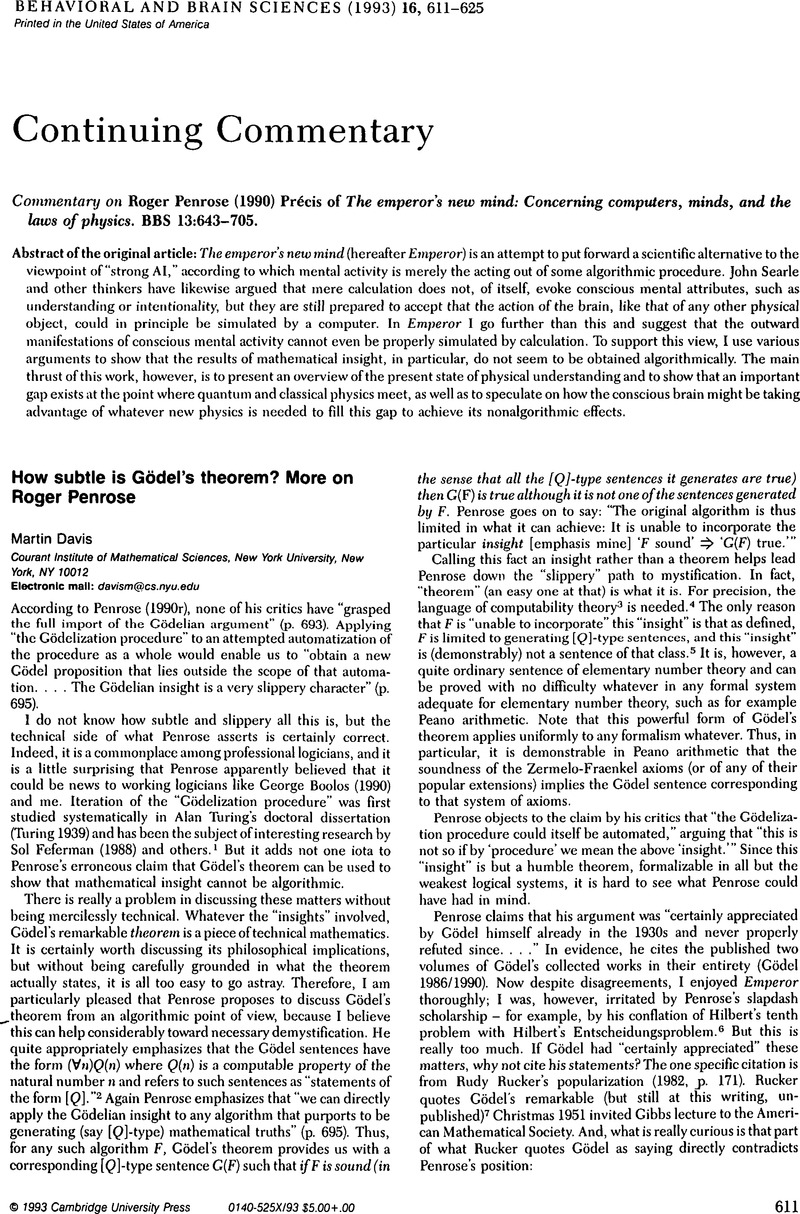Gödel, K. (
1986/
1990)
Kurt Gödel, collected works, vol.
1 (orig. pub. 1929–1936) & vol. 2 (orig. pub. 1938–1974), ed.
Feferman, S.,
Dawson, J. W. Jr.,
Kleene, S. C.,
Moore, G. H.,
Solovay, R. M. &
van Heijenoort, J..
Oxford University Press. [rRP, MD]
Google Scholar 